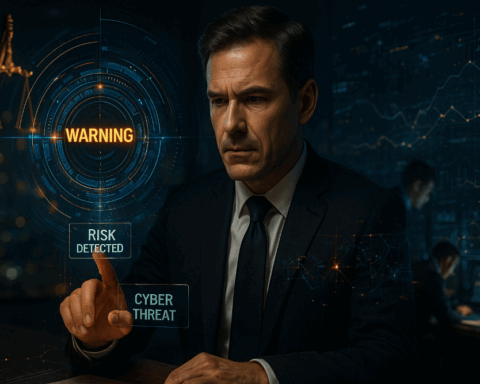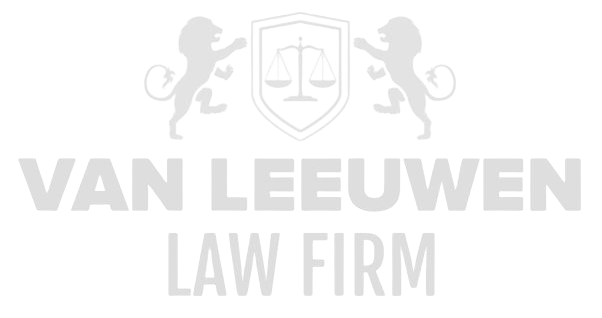Fraud constitutes one of the most disruptive forms of financial crime within the modern economy, striking at the core of an organisation’s operational and strategic integrity. While fraud was once associated with relatively rudimentary forms of deception, the digitalisation of business processes, the globalisation of markets and the increasing complexity of financial instruments have significantly broadened and deepened the spectrum of fraud risks. Fraudulent conduct now manifests not only in internal scenarios—where employees or executives misuse positions of trust—but also in sophisticated, cross-border schemes involving cybercrime, identity manipulation and financial engineering. As a result, boards today operate in a legal and operational environment in which fraud prevention can no longer be viewed as a standalone compliance activity, but rather as an integral component of governance, risk management and corporate strategy. Mitigating fraud risks demands a system of robust internal controls, continuous monitoring of processes, deployment of advanced technology and a corporate culture in which integrity is not simply articulated as a value but is enforced as a behavioural norm.
This dynamic is further intensified by the legal implications of fraud, which encompass both civil and criminal dimensions and revolve around issues of evidentiary burden, transparency and accountability. Board members must recognise that fraud carries far-reaching consequences not only for the organisation’s financial position, reputation and continuity, but also for their own personal exposure to liability. Recent case law demonstrates that director liability is more readily established where internal controls are inadequate or where supervision of known risks is deficient. Moreover, the investigation and prosecution of fraud requires a multidisciplinary approach: forensic accountants, legal specialists and investigative authorities play a critical role in reconstructing factual patterns, uncovering concealed structures and ensuring the implementation of corrective and punitive measures. Because fraud directly undermines the foundation of trust upon which both markets and stakeholder relationships depend, it is essential for boards to act proactively and transparently. Only an integrated, consistent and legally well-considered approach can limit the impact of fraud, reinforce governance frameworks and restore the confidence of shareholders, regulators and market participants on a sustainable basis.
Types of Fraud
Fraud exists in many different forms, each with its own dynamics, modus operandi, and impact. Identity fraud, for example, is one of the most acute threats in the digital era. This involves stealing and misusing a person’s identity, often for financial transactions, credit withdrawals, or to conceal criminal acts. The complexity of identity fraud increases due to the scale at which personal data circulates across digital networks and the sophisticated techniques fraudsters use, such as phishing, social engineering, and data breaches. The personal and financial consequences for victims can be devastating, and reversing the damage is usually a lengthy and bureaucratic process. Tax fraud represents another critical area, where taxpayers or businesses intentionally provide incorrect or incomplete information to evade tax obligations. This not only harms fiscal fairness but also undermines the collective resources needed for public services.
Insurance fraud encompasses a broad range of acts where deliberately false or misleading information is provided to obtain unjustified insurance payouts. This ranges from staged accidents to deliberately causing damage. This form of fraud increases costs for insurers, which ultimately results in higher premiums for all insured parties and puts pressure on the solidarity system. Investment fraud also has significant impact, especially in the context of capital markets and investment products. Fraudsters create misleading information, manipulate market prices, or present false returns to lure investors into investments that cause their money to vanish. Internal fraud, where employees or managers exploit their position, is particularly dangerous due to the breach of trust and its often hard-to-detect nature. Lastly, cyber fraud, targeting digital systems and infrastructures, has seen explosive growth. This type of fraud uses advanced technologies and hacking methods to steal data, hack systems, or misuse digital identities.
Fraud Risk Analysis
The first step in effectively combating fraud within an organization is conducting a thorough fraud risk analysis. This process involves the systematic identification of vulnerabilities, potential fraudulent scenarios, and risk areas that could be exploited. An effective risk analysis requires a detailed understanding of business processes, internal controls, financial flows, and organizational culture. Both external and internal factors that enable or encourage fraud are examined. Risk assessment is essential because it guides the priorities for preventive measures and resource management. Without a sharp analysis of where and how fraud can occur, organizations risk investing in ineffective measures or overlooking critical risks.
Conducting fraud risk analysis requires a multidisciplinary approach combining legal, financial, and operational expertise. Data analysis, interviews with employees, and reviewing policy documents are important tools. It is crucial that this analysis is not a one-time exercise but a dynamic process that is updated periodically to respond to changes in the environment, technology, and the organization itself. The results of a sound risk analysis are decisive in developing tailored prevention strategies, optimizing internal control mechanisms, and fostering a culture of vigilance. This contributes to comprehensive resilience against fraudulent practices.
The complexity of fraud risk analysis increases as organizations grow larger, more international, and more digital. Multinationals operate in diverse legal systems, cultural areas, and market segments, causing fraud risks to vary greatly. Moreover, digitization brings new risks, such as vulnerabilities in IT infrastructures and data integrity. The risk assessment must therefore also include an extensive cyber risk analysis and pay attention to external threats and internal weaknesses. Through this broad and detailed approach, organizations can strengthen their resilience while simultaneously complying with legal and supervisory requirements.
Fraud Detection and Investigation
Detecting fraud is a crucial and demanding part of the fraud-fighting process. Traditional methods such as financial audits and sampling are supplemented by advanced data analysis techniques that use statistical models, pattern recognition, and machine learning to identify anomalies and suspicious transactions. Forensic investigation goes beyond numbers: it involves collecting and analyzing digital evidence, interviewing involved parties, and reconstructing the fraudulent acts. The complexity of fraud investigations requires a careful and methodical approach to establish the evidential basis conclusively and to facilitate possible legal prosecution.
The role of data analysis in fraud detection has increased exponentially in recent years. Large datasets are scanned for irregularities that may indicate fraudulent activities, such as duplicate payments, unusual customer behavior patterns, or deviations in financial reports. Advanced software tools make it possible to generate real-time alerts, enabling early intervention. Additionally, the use of digital forensic techniques is essential to trace footprints on electronic devices and networks, often key to uncovering the modus operandi of fraudsters.
Effective fraud investigation also requires integrating expertise from various disciplines, including forensic accountants, IT specialists, lawyers, and behavioral experts. This multidisciplinary team is capable of not only gathering technical evidence but also understanding the context and motivation of the fraudsters. Thorough documentation and transparency in the investigation process are crucial to safeguard the integrity of the investigation and ensure that findings hold up legally. Only with a well-executed and meticulous investigation can justice be served to victims and appropriate sanctions imposed.
Internal Control and Governance Measures
Institutionalizing effective internal control mechanisms constitutes a fundamental barrier against fraud within organizations. These controls must be designed not only to detect fraudulent behavior but preferably to prevent it. Internal control encompasses a wide range of policies, procedures, and organizational structures that ensure the reliability of financial reporting, compliance with laws and regulations, and protection of company assets. Setting up these measures requires a systematic and integrated approach, with clarity about responsibilities and authorities at its core.
A critical element of internal control is segregation of duties so that critical processes cannot be controlled by a single individual without oversight. Additionally, well-documented and formal procedures for transactions, authorizations, and checks are indispensable to discourage fraud. Regular internal audits and surprise checks contribute to a culture of vigilance. Management plays a key role in conveying the importance of integrity and consistently enforcing internal rules. Without a strong tone at the top, creating an effective control environment remains challenging.
Besides organizational measures, technological tools can significantly enhance the functioning of internal controls. Automated systems for transaction monitoring, access management, and change control increase the accuracy and speed of detecting irregularities. At the same time, these systems must be robust and flexible enough to adapt to changing risks and new fraudulent methods. Optimizing internal controls is an ongoing process in which both human behavior and technological innovation play a central role in effectively combating fraud.
Whistleblowing and Whistleblower Protection
Whistleblowing, the act of reporting suspected fraud or other irregularities within an organization, plays a crucial role in the early detection and tackling of fraudulent behavior. It enables employees, external partners, or other stakeholders to report misconduct without fear of retaliation or negative consequences. The effectiveness of a whistleblowing system depends heavily on the accessibility, anonymity, and confidentiality it offers to reporters. When an organization ensures these elements, it creates a safe environment where signals of fraud are more quickly and frequently brought to light. This contributes to a culture of transparency and accountability, which is essential for preventing large-scale fraud.
In addition to establishing a functional reporting system, whistleblower protection is regulated by law in many jurisdictions. These regulations aim to protect whistleblowers from dismissal, intimidation, or other forms of retaliation. Effective protection encourages individuals to report irregularities and thereby strengthens an organization’s arsenal against fraud. However, in practice, challenges remain, as whistleblowers often face social or professional isolation. Therefore, it is important that organizations not only comply with legal requirements but also actively promote a culture in which whistleblowers are regarded as valuable allies.
A well-functioning whistleblower policy also requires careful handling of reports. This means that reports are taken seriously, investigated thoroughly, and that appropriate actions are taken. Transparency about follow-up steps, without compromising the anonymity of the reporter, contributes to trust in the system. Organizations that successfully integrate these elements strengthen their resilience against fraud and increase the confidence of employees, customers, and stakeholders.
Role of Technology and Cybersecurity
Technology nowadays plays an indispensable role in both preventing and detecting fraud. Advanced software applications, artificial intelligence (AI), and machine learning enable organizations to monitor large volumes of data in real time and flag anomalies that may indicate fraudulent activities. By training algorithms on known fraud cases, patterns can be detected that are difficult for human supervisors to identify. This not only increases the speed and efficiency of fraud detection but also reduces human error and subjectivity that can otherwise occur.
Cybersecurity forms a second pillar in the technological fight against fraud. The digitization of financial transactions, customer data, and business processes increases the risk of cyberattacks aimed at identity theft, data theft, and system manipulation. A robust cybersecurity infrastructure—including firewalls, encryption, multi-factor authentication, and regular penetration testing—is essential to safeguard system integrity and prevent fraudulent access. Continuously updating security protocols and training employees to recognize digital threats is indispensable in this regard.
Integrating technology into fraud prevention is not without challenges. Organizations must invest in appropriate technological solutions tailored to their specific risks and business processes. Furthermore, the use of data analysis and AI raises ethical and privacy concerns that must be carefully weighed. Effective fraud prevention therefore requires a balanced approach in which technological innovation goes hand in hand with transparency, compliance with laws and regulations, and respect for individual rights.
Fraud Prevention and Sanctions
Combating fraud requires not only preventive and detective measures but also a powerful legal framework to prosecute and sanction offenders. Fraudulent acts are criminal offenses in virtually all jurisdictions, with penalties ranging from fines and damages to imprisonment. Acting against fraudsters is crucial to create a deterrent effect, limit societal harm, and restore trust in financial and commercial systems.
The execution of fraud prevention involves a combination of criminal and civil procedures. Criminal prosecution focuses on punishing offenses and recovering unlawfully obtained gains. Civil procedures may address damage recovery and enforcement of contractual obligations. Additionally, regulatory authorities and supervisory bodies play a key role by imposing administrative fines, revoking licenses, and instituting disciplinary measures.
Beyond the legal aspect, developing an effective fraud prevention strategy is also an organizational challenge. This requires cooperation between internal departments, external authorities, and sometimes international partners. Monitoring legislation, continuously evaluating enforcement practices, and adapting internal procedures are indispensable components to sustainably address fraud. Only through this integrated approach can an organization safeguard its integrity and minimize the risk of recurring fraud.
Ethics and Culture within Organizations
Ethics and culture within organizations form the foundation of effective fraud prevention. An organization where integrity and transparency are central creates an environment in which fraudulent behavior finds little room to thrive. Developing a strong ethical culture requires leadership that leads by example, sets clear standards, and consistently acts against unethical conduct. This extends beyond formal codes of conduct; it also includes unwritten values and daily interactions among employees. When ethics are deeply embedded in the organizational culture, employees become more aware of their responsibilities and are less inclined to engage in fraud.
Changing an organization’s culture demands sustained effort and a systematic approach. It begins with establishing core values that promote honesty, accountability, and respect. Additionally, training and awareness programs are essential to embed these values and empower employees to identify and report fraud. Creating an open communication climate, where mistakes can be discussed without immediate punishment, also contributes to a healthy culture. Within this context, management and human resources play a crucial role by rewarding ethical behavior and promptly addressing deviations.
An organization with a strong anti-fraud culture also pays attention to signals of employee dissatisfaction or pressure, which often underlie fraudulent behavior. By focusing on employee well-being, reducing stress factors, and fostering an inclusive workplace, the root causes of fraud are addressed. Thus, ethics and culture within organizations serve not only as a preventive measure but also as a strategic investment in sustainable integrity and reliability.
Fraud in the Financial Sector
The financial sector is particularly vulnerable to fraud risks due to the large volume of money flows, complex products, and high degree of digitalization. Banks, insurers, investment firms, and other financial service providers face a wide range of fraud types, from internal malfeasance to sophisticated cyberattacks. Safeguarding trust and stability within this sector requires robust fraud-fighting measures and constant vigilance. This sector is subject to strict supervision by national and international authorities, which impose regulations and guidelines to protect consumers and the financial system.
Specific risks in the financial sector include money laundering, market manipulation, insider trading, and credit fraud. Technological developments offer opportunities for enhanced detection but also expose institutions to new threats such as ransomware and phishing. Compliance departments within financial institutions play a key role in monitoring transactions, screening customers, and ensuring adherence to laws and regulations. Cooperation with enforcement agencies and supervisors is crucial for effective response and prevention.
Given the significant societal impact of financial fraud, this sector carries a special responsibility to ensure transparency, integrity, and customer protection. Innovations such as open banking and fintech bring new opportunities and challenges, requiring ongoing adaptation and improvement of fraud prevention strategies. Only through an integrated approach, combining technology, human insight, and regulation, can financial fraud be effectively combated.
International Cooperation
Fraud rarely respects national borders and often has a cross-border character. This necessitates international cooperation between countries, supervisory authorities, enforcement agencies, and private parties to effectively combat fraud. Differences in legislation, culture, and capacity pose challenges but also drive the need to share knowledge, information, and resources jointly. International treaties, task forces, and information-sharing platforms are crucial in the fight against cross-border fraud.
Intelligence exchange between enforcement agencies makes it possible to map networks and money flows spanning multiple jurisdictions. This is essential for detecting complex fraud cases such as money laundering, tax evasion, and cyber fraud. Furthermore, international partnerships ensure that perpetrators cannot exploit jurisdictional differences or ‘safe havens.’ Sanctions, judicial cooperation, and mutual extradition agreements strengthen enforcement capabilities and increase the likelihood of successful prosecution.
Promoting international cooperation also requires investments in capacity building, training, and harmonizing laws and regulations. Multilateral organizations such as Interpol, Europol, the Financial Action Task Force (FATF), and Public Prosecutor’s offices collaborate to develop best practices and provide operational support. Only through cross-border cooperation can the global nature of fraud be acknowledged and worldwide trust in financial and business systems be protected.











